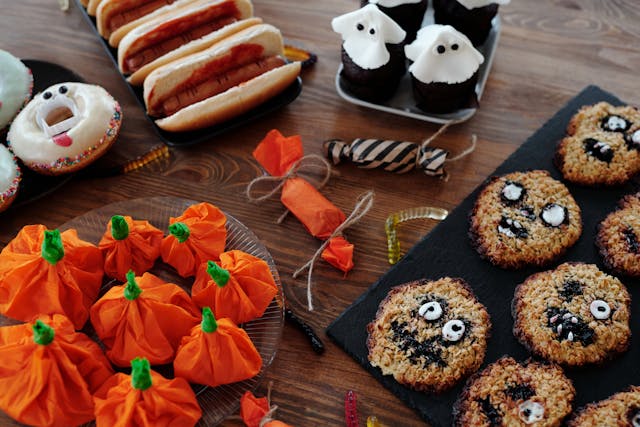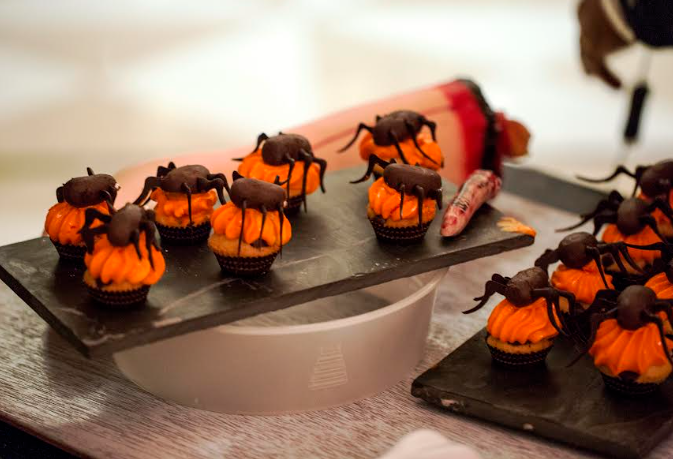
The Roots of Halloween: A Historical Overview
Halloween, a festival widely celebrated today for its fun and excitement, has its origins steeped in ancient customs and beliefs. One of the earliest roots of Halloween can be traced back to the Celtic festival of Samhain, which was celebrated approximately 2,000 years ago in what is now Ireland, the United Kingdom, and northern France. The Celts believed that on the night of October 31, the boundary between the living and the dead became blurred, allowing spirits to return to Earth. This poignant belief fueled several traditions that have endured over time.
During Samhain, the Celts would light bonfires and wear costumes, often made from animal heads and skins. The flames were thought to provide protection, while the costumes were intended to disguise individuals from vengeful spirits wandering the earth. This tradition of wearing costumes has significantly influenced modern Halloween customs, as children and adults alike don various outfits to celebrate the occasion.
The transition from pagan rituals to Christian practices began in the early Middle Ages. As Christianity spread throughout Europe, church leaders sought to integrate local pagan traditions to attract followers. In this blend, Samhain became intertwined with the Christian observance of All Hallows’ Eve, the evening before All Saints’ Day, which honored saints and martyrs. This melding of traditions gradually evolved into the Halloween we recognize today, moving beyond solemnity to embrace community and festivity.
Over centuries, Halloween has transformed into a lively celebration, characterized by various activities such as trick-or-treating, pumpkin carving, and festive gatherings. As society evolved, so too did the meaning and practices surrounding Halloween, making it a vibrant holiday that combines historical significance with contemporary enjoyment. The haunting allure of Halloween continues to captivate audiences worldwide, maintaining its relevance in both historical contexts and modern celebrations.

Halloween Celebrations Around the Globe
Halloween, as it is commonly known in the United States, is celebrated with a variety of customs and traditions that resonate with both adults and children alike. The most prominent practices include trick-or-treating, where children dress in costumes and go door-to-door collecting candy, and costume parties that embrace everything from spooky to quirky themes. This American-style Halloween has gained notoriety around the world, influencing numerous other cultures to adopt similar festivities.
Contrasting significantly with this is Mexico’s Día de los Muertos, or Day of the Dead, which occurs concurrently with Halloween. This celebration focuses on honoring deceased loved ones, showcasing a rich tapestry of traditions filled with colorful altars, marigolds, and festive gatherings rather than an ambiance of fright. Families come together to share stories, enjoy traditional foods, and remember those who have passed, emphasizing reverence over spookiness.
In Europe, Halloween’s roots are deeply intertwined with ancient traditions. In regions such as Ireland and Scotland, the festival of Samhain marked the end of the harvest season and the onset of winter. Customs like lighting bonfires and celebrating with games remain prevalent, often adapted into modern Halloween festivities. These regions maintain a blend of old-world charm and contemporary celebration, demonstrating how longstanding traditions can evolve over time while retaining their core cultural significance.
Meanwhile, Halloween’s growing popularity is evident in India, where urban areas are increasingly embracing this celebration. The trend is characterized by costume parties and themed events that attract a youthful audience eager for festive experiences. Although it may not have deep-rooted connections to the culture, Halloween celebrations in India embody the globalization of customs, highlighting a willingness to adopt and adapt international traditions into local festivities. This evolving landscape of Halloween festivities around the world showcases the rich diversity of cultural practices, each with its unique flavor and significance.
Creating Your Hauntingly Delicious Halloween Feast
Halloween is the perfect occasion to unleash your creativity in the kitchen and prepare a feast that is both fun and flavorful. A well-prepared Halloween-themed dinner can captivate guests and enhance the eerie ambiance of the holiday. To start, consider serving a spine-chilling ‘Witch’s Brew Soup,’ a vibrant green concoction made from a mix of peas, spinach, and seasoning to deliver a delightful, savory flavor. Garnish it with floating eyes made from olives for a creepy surprise that will excite and delight your guests.
Another playful dish is the ‘Mummy Hot Dogs.’ Wrap strips of crescent dough around hot dogs to resemble mummies and bake until golden brown. You can use dots of mustard or ketchup to create eyes, adding a creative twist that keeps the theme alive while ensuring the dish remains appealing to all ages. Additionally, include ‘Pumpkin Deviled Eggs,’ which can be made with a classic deviled egg mixture, adding orange food coloring to the yolk filling to resemble mini pumpkins. Top them off with a sprig of chives to represent a pumpkin stem, creating a festive addition to your spread.
Do not forget to prepare a ‘Spider Web Dip’ for an accompaniment that is sure to impress. Layer creamy bean dip with sour cream shaped like a spider web, and use black olives to create the arachnid itself, adding a dash of spookiness to your gathering. To elevate the dining experience further, invest time in decorating your table with Halloween motifs. Incorporating elements like plastic spiders, faux cobwebs, and miniature pumpkins can transform an ordinary meal into a memorable Halloween feast.
By embracing creativity with both your dishes and decorations, you can ensure a celebration that is not only delicious but also captures the spirit of Halloween.
Conclusion: Embracing the Spirit of Halloween
Halloween stands as a cherished occasion that brings joy, creativity, and a sense of community to individuals and families alike. This festive season inspires a unique blend of excitement as people come together to celebrate with friends, relatives, and neighbors. The atmosphere is charged with the thrill of dressing up in imaginative costumes, decorating homes with spooky accents, and, most importantly, indulging in a hauntingly delicious feast. The culinary aspect of Halloween adds a delightful twist to traditional gatherings, making them even more memorable.
As we explore the depths of Halloween traditions, it becomes evident that food plays a pivotal role in enhancing the overall celebration. Themed treats, cleverly crafted dishes, and creative desserts not only contribute to the visual appeal of the festivities but also tantalize our taste buds. From ghostly cupcakes adorned with colorful icing to savory dishes that evoke the holiday’s spirit, a thoughtfully prepared spread can elevate the experience for everyone involved.
The lighthearted nature of Halloween serves as an invitation for individuals to unleash their imaginative flair, whether they are participating in festivities or enjoying the wholesome activity of trick-or-treating with children. This day offers us a chance to celebrate the magic of creativity and camaraderie, fostering connections that leave lasting memories. Cooking and sharing a delicious Halloween feast transforms ordinary gatherings into extraordinary celebrations, engaging all attendees in a shared experience of joy and indulgence.
As October 31st approaches, consider embracing the spirit of Halloween with enthusiasm and a touch of creativity. Gather your loved ones, prepare those thematic treats, and immerse yourselves in the festivities that celebrate this unique time of year. May your Halloween be filled with laughter, delicious flavors, and the warmth of cherished connections!

